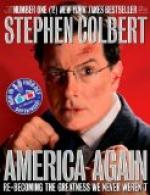Although Mac’s description of the House had been apt, he had sadly underrated the furniture. There were four chairs, all “up” to my weight, while two of them were up to the Maluka’s. The cane was all gone, certainly, but had been replaced with green-hide seats (not green in colour, of course, only green in experience, never having seen a tan-pit). In addition to the chairs, the dining-table, the four-poster bed, the wire mattress, and the looking glass, there was a solid deal side table, made from the side of a packing-case, with four solid legs and a solid shelf underneath, also a remarkably steady washstand that had no ware of any description, and a remarkably unsteady chest of four drawers, one of which refused to open, while the other three refused to shut. Further, the dining-table was more than “fairly” steady, three of the legs being perfectly sound, and it therefore only threatened to fall over when leaned upon. And lastly, although most of the plates and all the cups were enamel ware, there was almost a complete dinner service in china. The teapot, however, was tin, and, as Mac said, as “big as a house.”
As for the walls, not only were the “works of art” there, but they themselves were uniquely dotted from ceiling to floor with the muddy imprints of dogs’ feet—not left there by a Pegasus breed of winged dogs, but made by the muddy feet of the station dogs, as the, pattered over the timber, when it lay awaiting the carpenter, and no one had seen any necessity to remove them. Outside the verandahs, and all around the house, was what was to be known later as the garden, a grassy stretch of hillocky ground, well scratched and beaten down by dogs, goats, and fowls; fenceless itself, being part of the grassy acres which were themselves fenced round to form the homestead enclosures. Just inside this enclosure, forming, in fact, the south-western barrier of it, stood the “billabong,” then a spreading sheet of water; along its banks flourished the vegetable garden; outside the enclosure, towards the south-east, lay a grassy plain a mile across, and to the north-west were the stock-yards and house paddock—a paddock of five square miles, and the only fenced area on the run; while everywhere to the northwards, and all through the paddock, were dotted “white-ant” hills, all shapes and sizes, forming brick-red turrets among the green scrub and timber.
“Well!” Mac said, after we had completed a survey. “I said it wasn’t a fit place for a woman, didn’t I?”
But the Head-stockman was in one of his argumentative moods. “Any place is a fit place for a woman,” he said, “provided the woman is fitted for the place. The right man in the right place, you know. Square people shouldn’t try to get into round holes.”
“The woman’s square enough!” the Maluka interrupted; and Mac added, “And so is the hole,” with a scornful emphasis on the word “hole.”
Dan chuckled, and surveyed the queer-looking building with new interest.




